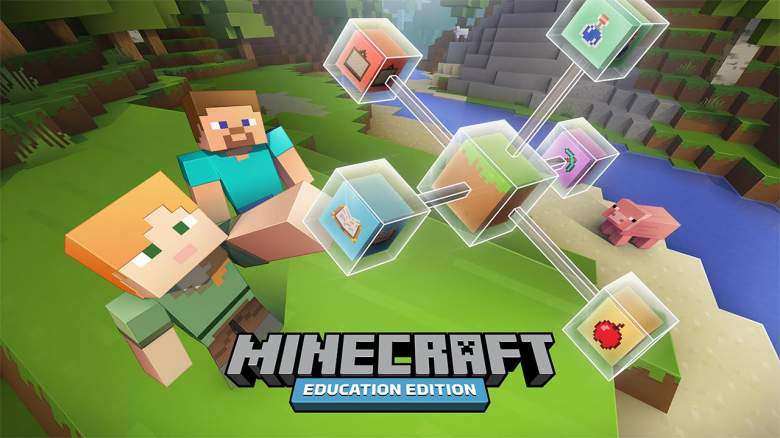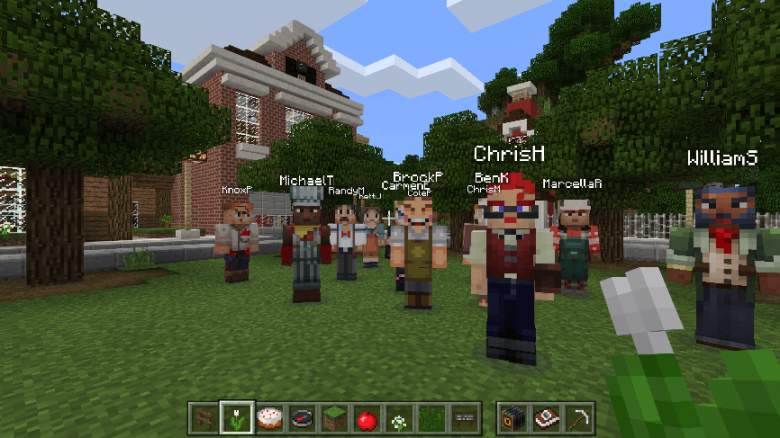
Microsoft and Minecraft have teamed up with each other to create Minecraft: Education Edition. The game has introduced a Code Builder program at the Microsoft EDU event today, where they also announced a MacBook Air competitor called the Surface Laptop.
Minecraft is already known as the wildly popular world building game but now we are going to see how it fares in the classroom. Here are the fast five facts you need to know about Minecraft: Education Edition.
1. Minecraft: Education Edition Encourages Students To Work Together
Minecraft: Education Edition blends the classroom and curriculum together in a game that many kids already enjoy. It encourages classmates to work together to meet a common goal. It is designed in such a way to allow students to solve problems in a small group or work together as a whole class to overcome the obstacles found in the game.
Minecraft also encourages students to be creative and try new things. The game allows players to be creative and it doesn’t give them any direction on what to do which is why the possibilities are endless.
However, the teachers should create a goal for the students to accomplish so it doesn’t feel totally like a game. Minecraft: Education Edition allows educators to map projects and activities directly to specific learning outcomes and curriculum standards.
2. The Game Is Very Affordable and Also Features a Free Trial
According the Minecraft: Education Edition’s webpage, the game is available to purchase for $5 per user, per year or through a district-wide licensing model. A trial is available where users have a set number of logins – 25 for teachers and 10 for students – before you are forced to stop playing or purchase a license.
Four things are needed to get Minecraft: Education Edition up and running once you get the license. First, you’ll need the Office 365 Education license which can be obtained right here. You’ll need to make sure all your computers have either Windows 10 or macOS running. An internet connection is required if the students plan on playing with one another and mouse and headphones are recommended.
3. Code Builder for Minecraft: Education Edition Allows Students To Connect With Popular Learn-To-Code Platforms
Minecraft: Education Edition is getting a big upgrade that was announced today called the Code Builder program. Students will now be able to learn coding by traveling around the game’s world.
Typing “/code” will bring up a list of commands and code snippets. From there, a robot avatar called “The Agent” appears and acts on code to do things like work while you’re away, lighting your fortress at night or even digging for resources for you. On the stage, the agent built a windmill and columns for the Parthenon automatically. Codebuilder is available in beta right now.
Learn-to-code programs such as MakeCode, Scratch and Tynker will be used to interact with the game. In the demo shown onstage, using a simple string of commands in Tynker, The Agent was able to dig a pit to find water, but Microsoft notes that the potential extends as far as your coding skills. The robot will be able to do whatever you are able to code. It will grow with you.
4. There Are Options For Students Starting At Three Years Old

On the “Class Resources” tab on the website, there are many different options for students.
There are also videos to help you learn Minecraft which can helpful for students and teachers alike. These videos include training videos, sample lessons, starter worlds and connections to other Minecraft educators.
There are different tabs to clickthrough that range from 5-10 years old, 11-13 years old and 14 and older, depending on the age group that will be working with the game.
5. Lesson Plans Range From Math, Science, Language Arts, History and Visual Art

There are a variety of different things students can learn from Minecraft. On the “How It Works” tab, you are able to click through lesson plans for the various subjects and get an idea of how it will function in the classroom.
For example, the Math tab has a “Goods and Services Simulation” that is designed to teach students about production, distribution and consumption of goods and services. These lessons are all submitted by Minecraft educators so you really can’t go wrong with any of them.
There are tons more options to pick from as there are 25 different tabs to choose from while you are picking what to teach today. You’re bound to find something worthwhile is you look long enough.

